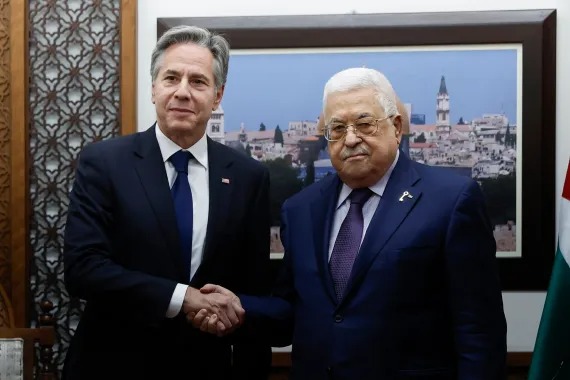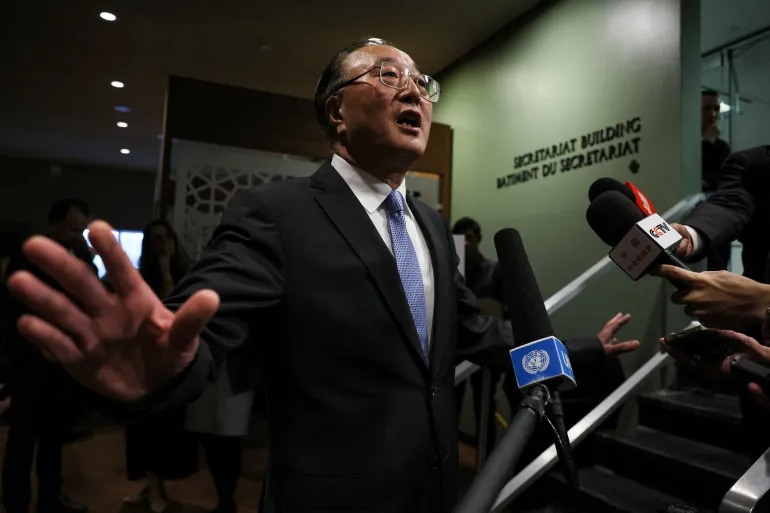Amidst the ongoing conflict in Gaza, Palestinian Authority (PA) President Mahmoud Abbas has raised the possibility of the PA’s return to power in the Gaza Strip, but under one critical condition: a “comprehensive political solution” to the Israel-Palestine conflict. As Israel intensifies its campaign against Hamas, questions loom over who will govern the Palestinian territory after the dust settles. This development emerged during a meeting between President Abbas and the US Secretary of State Antony Blinken, who is on a regional tour amid Israel’s month-long military campaign in Gaza.
The PA’s Potential Return
President Abbas, in a crucial meeting with Antony Blinken, articulated the conditions under which the PA could regain control of the Gaza Strip. These conditions hinge on a broader political solution encompassing the entirety of the occupied West Bank, East Jerusalem, and Gaza. It signifies a diplomatic perspective in the face of ongoing hostilities and the pressing need for a resolution to the Israel-Palestine conflict.
Israel’s Stance on Hamas
Israel, in its relentless military campaign against Hamas, seeks to dismantle the organization. This objective has raised concerns over the governance vacuum that would emerge in Gaza post-conflict. The Israeli government’s position is underscored by its claims that Hamas’s actions, including the October 7 attack that resulted in substantial Israeli casualties, warrant their expulsion from power. This stance is echoed by Washington, which views Hamas as a “terrorist” group.
US Involvement and Humanitarian Concerns
Antony Blinken’s visit to the region, with a stop in the occupied West Bank, suggests the growing involvement of the United States in shaping the Gaza conflict’s aftermath. The US emphasized the pivotal role of the Palestinian Authority in Gaza’s future. This stance marks a significant shift in the US position. However, while Washington is committed to providing aid and restoring essential services to Gaza, it has stopped short of endorsing a full ceasefire, opting instead for a “pause” to facilitate humanitarian assistance.
In a region beset by conflict and loss of life, the path to a lasting peace remains uncertain. As Israel’s military campaign continues, Hamas’s grip on power faces a formidable challenge. President Abbas’s vision of a “comprehensive political solution” that includes Gaza’s return to the Palestinian Authority represents a potential pivot toward diplomacy and political resolution. The involvement of the United States adds a new dimension to the ongoing crisis, offering hope for a brighter future for the people of Gaza. However, whether the elusive comprehensive political solution can be found remains to be seen, leaving the fate of Gaza in the balance.
















